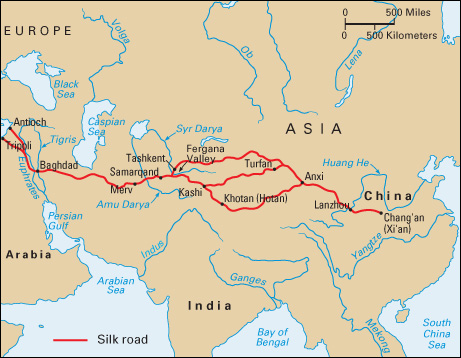Kushan, << ku SHAHN, >> Empire flourished in what is now Pakistan, Afghanistan, and northern India from about A.D. 50 to the mid-200’s. The Kushan were a central Asian people, originally from northwest of China, who had settled in five kingdoms in what is now Afghanistan. Kujala Kadphises founded the empire by uniting these kingdoms. His successors extended the Kushan Empire into the Indus and Ganges valleys. The most famous Kushan ruler was Kanishka (see Kanishka ).
The Kushan Empire linked central Asian, Chinese, Indian, and Persian cultures and trade. Kushan emperors opened and protected the Silk Road, a major trade route for caravans carrying silk and other luxury goods from China to India and the Middle East. Cloth, spices, and medicines left Indian ports in ships bound for the Roman Empire. Rome sent back gold coins, Greek wine, and slaves.

The Kushan Empire adopted Buddhism as its official religion. Buddhist missionaries spread this religion, which started in India, throughout much of Asia. The first stone images of Buddha were created by sculptors in the towns of Gandhara and Mathura. The Gandhara artists created their Buddhas by combining Greek, Roman, and Asian art forms.
See also Silk Road .
